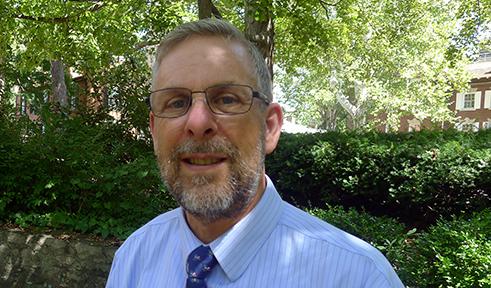
Professor of Environmental & Plant Biology
Brian C. McCarthy is the senior associate dean in the College of Arts & Sciences. He is also a professor of forest ecology in the Department of Environmental & Plant Biology. He holds a bachelor’s degree in biology, a master’s degree in botany, and a doctoral degree in ecology. As part of his training, Dr. McCarthy gained considerable experience in experimental design, basic and applied statistics, and computer programming.
He came to Ohio University in 1992, has published over 125 papers in the peer-reviewed literature, authored or co-authored over 300 papers at regional and national professional conferences, received over $1.25 mil in research funding, and advised over 50 graduate students to degree completion. He has taught numerous courses including forest science, vegetation analysis, plant community ecology, and biostatistics. All aspects of his scholarship, teaching, professional service, and administrative duties are heavily dominated by data, its analysis, and communication.
As senior associate dean, Dr. McCarthy works collaboratively with the dean’s executive staff to oversee the operations of the college. He sits on a broad range of university committees to represent the college, assists with the management and staffing of 19 academic departments, and manages facilities and capital planning for the college.
Education
Ph.D., Rutgers University, 1989
Research
McCarthy's lab employs a combination of experimental and observational studies to understand the population dynamics and community ecology of eastern hardwood forests. Most broadly, his interests could be described as forest ecology.
Areas of interest include: ecological life history attributes associated with hardwood regeneration, ecology and restoration of the American chestnut, dendrochronology, forest herb community structure and diversity, ecology of non-native invasive plant species, forest restoration and mineland reclamation.
Other Websites
Courses Taught
- PBIO 3150/5150 Statistical Methods in Plant Biology
- PBIO 4360/5360 Plant Community Ecology
- PBIO 8700 Biostatistics-II, Multivariate Methods
Professional Service
- Editor-in-Chief, Journal of the Torrey Botanical Society (2002-2013)
- Editorial Board, International Journal of Forestry Research (2008-2014)
- Editorial Board, Forests (2009-2014)
- President, Ohio Chapter of the American Chestnut Foundation (2009-2014)
- Board of Directors, The American Chestnut Foundation (2004-2015)
- Program Chair, Annual ESA Meeting (2012)
Selected References
Last 5 years only:
Rudolph, A.J. B.C. McCarthy, T.F. Hutchinson, R.S. Snell. 2025.Positive regeneration responses of oak, hickory, and american chestnut to repeated prescribed fires and mechanical thinning 22 years after study initiation. Forest Ecology and Management 585, https://doi.org/10.1016/j.foreco.2025.122656 .
Rudolph, A.J., R.S. Snell, E. Delach, B.C.McCarthy. 2024.Interspecific, conspecific, and ontogenetic responses of tree rings to climate: A case study utilizing Carya glabra, Carya ovata, Carya tomentosa, and Quercus montana from an Oak-Hickory Forest in Southeastern Ohio, Dendrochronologia, Volume 87, https://doi.org/10.1016/j.dendro.2024.126254 .
Rudolph, A.J., R.S. Snell, B.C.McCarthy. 2024. A decades-long case study: Understanding the effects of mesophication on the forest community with emphasis on Carya spp. Dynamics. Journal of the Tori botanical Society 152: 10–22. https://doi.org/10.3159/TORREY-D-24-00017
Smith, S. J., B. C. McCarthy, T. F. Hutchinson, and R. S. Snell. 2022. Individual level variation and reproductive effort in chestnut Oak (Quercus montana Willd.) And black oak (Q. velutina Lam.). Forest Ecology and Management. DOI: 10.1016/J.FORECO.2022.120029.
Smith, S. J., B. C. McCarthy, T.F. Hutchinson, and R. S. Snell. 2021. Both weather and resources influencing masting in chestnut oak (Quercus montana Willd.) and black oak (Q. Velutina Lam.). Plant Ecology. DOI: 10.1007/S11258 –021–01115 –7.
Eyitayo, D. L. and B. C. McCarthy. 2020. Plant community composition in two human-modified landscapes, a powerline corridor and an old field. Castanea. DOI: 10.2179/0008–7475.85.1.185.
